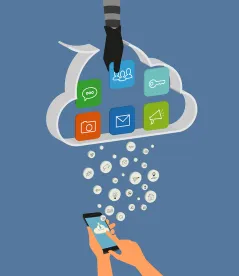The Federal Communications Commission (“FCC” or “Commission”) completed its first Broadband Data Collection (“BDC”) on September 1, 2022.[1] The Commission is now accepting and evaluating bulk challenges to the FCC’s Broadband Serviceable Location Fabric (“Fabric”), which serves as the foundation for the FCC’s upcoming broadband data map. To ensure the most accurate broadband map possible, service providers, state and local governments, and other entities are strongly encouraged to submit data in the BDC system pointing out any mistakes found in the Fabric.
Challenge Process Background
Currently, the FCC is only considering bulk challenges to its Fabric, meaning filing entities must submit challenges or corrections based on multiple locations. The Commission will allow individuals and other entities to submit challenges to single locations once the broadband map has been published later this fall.
The FCC’s Fabric aims to map all Broadband Serviceable Locations (“BSLs”) in the country. BSLs are business or residential locations where a broadband connection has been or could be installed within ten business days of a request for service. The FCC continues to remind filing entities that the Fabric will not necessarily identify all buildings as a BSL, and therefore challenges must be predicated on FCC definitions of residential and business BSLs.[2]
As an example, one apartment building is considered a single BSL under the Commission’s definition, despite having multiple units that have or could have broadband connections. Accordingly, the FCC will not accept a challenge that attempts to include the individual units within the building as separate BSLs because the FCC considers the building itself to be the BSL, not the units. The Fabric does, however, account for multiple units within a single BSL; therefore, corrections can be made to accurately reflect the number of units and their corresponding addresses. Moreover, structures that have no apparent use for broadband (such as a shed used for storage or an abandoned building) will not be labeled as a BSL. It is important for challengers to familiarize themselves with the BSL definitions so that challenges are not rejected or missed.
The various categories of challenges are: (1) missing broadband serviceable location, (2) incorrect location primary address, (3) incorrect location unit count, (4) incorrect location building type code, (5) location not within footprint of correct building, (6) location is not broadband serviceable, and (7) additional information needed for location address. To determine whether to submit a challenge, filers can compare internal data with the Fabric data by executing a free licensing agreement with the FCC’s Fabric contractor, CostQuest Associates. For those entities that do not already have the Fabric data, more information on obtaining access to the Fabric can be found here.
How to Format a Challenge
Bulk Fabric challenges must include the name and contact information of the filing entity, the location(s) being challenged, the category of the challenge, and evidence supporting the challenge. Additionally, the challenges must include records of each challenge location in CSV format, and the data must be submitted in accordance with the Data Specifications for Bulk Fabric Challenge Data. Required data for the various Fabric challenges can be found in the Bulk Fabric Challenge Matrix and step by step guidance can be found on an FCC video tutorial on How to File Bulk Fabric Challenges in the BDC System.
In addition, the FCC’s Broadband Data Task Force held an online Technical Assistance Workshop on Wednesday, September 28, 2022, to assist entities who plan to file bulk challenges to data in the Fabric. The workshop reviewed how to open and work with the Fabric dataset and will also demonstrate possible approaches to identifying missing or mislabeled locations in the Fabric data set. A recording of the workshop will be available at the BDC Help Center within the next week.
Additional Information
The FCC encourages filers to submit challenges as soon as possible to ensure that accepted challenges are reflected in the Fabric maps used in advance of the December 31, 2022 BDC filing window. Nevertheless, there is no deadline for filing challenges and submissions will be reviewed on a rolling basis. Filers can visit the BDC Help Center to find more information and resources concerning the challenge process, including a webinar recording explaining the challenge process generally.
FOOTNOTES
[1] For more information on the FCC’s Broadband Data Collection, please see the rest of our BDC blog series: The FCC’s New Broadband Data Collection is About to Launch | Beyond Telecom Law Blog; The Who, What, When, and Where of the FCC’s New Broadband Data Collection | Beyond Telecom Law Blog; Overview of the FCC’s Broadband Data Collection Resources | Beyond Telecom Law Blog.
[2] Establishing the Digital Opportunity Data Collection; Modernizing the FCC Form 477 Data Program, WC Docket Nos. 19-195, 11-10, Third Report and Order, 36 FCC Rcd 1126, 1175-77, para. 126 (2021) (Third Report and Order).
Liam Fulling also contributed to this article.




 />i
/>i


